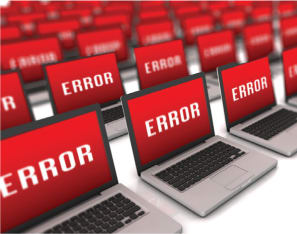THE PATH TO PAPERLESS
Archive your practice’s fund of knowledge
You never know when disaster may hit.
By Peter J Polack MD, FACS

|
Peter J. Polack, MD, FACS, is co-managing partner for Ocala Eye, a multi-subspecialty ophthalmology practice located in Ocala, Fla. He is also founder of Emedikon, an online practice resource for physicians and administrators. His e-mail is ppolack@ocalaeye.com |
I strongly believe in the critical importance of having a disaster recovery plan in place. What would you do if your main practice location were flooded, or destroyed by a tornado? In a paper-based practice, this could be devastating.
But an EHR-based practice wouldn’t fare much better if it didn’t have some sort of disaster recovery and business continuity plan. Is there a way to get you back up and running if your data center is down? Can you regroup and operate out of a satellite location?
PLANS MUST BE SHARED
Most of us as physicians and administrators don’t understand the technical issues necessary to create this plan in the first place. And, in many cases, the person in charge of the practice’s information technology (IT) fails to document the critical elements that make up the plan, or fails to put together any plan at all. I have identified four reasons IT people do this:
- To deliberately hide information, either to try to make themselves indispensable or to cover up their own shortcomings.
- They lack formal training in process mapping or project management and do not know how to produce this kind of documentation.
- They think their way of doing things is the best and assume others would reproduce their methods.
- They do not have a “big-picture” perspective and dismiss the need for an emergency contingency plan.

Most IT professionals, however, will understand their value is in not only keeping the technology running on a day-to-day basis, but also in mitigating any low-probability but high-risk events that could cripple the practice.
When she took over as our IT director, Kathaliya Folds understood the vulnerabilities the practice faced without documenting even the simplest technical tasks that would be required should the practice have to rebuild on the fly. If either she or our other IT personnel were not available or were ill or had a personal emergency, it would be critical to have documentation of their fund of knowledge — a sort of data dump — that anyone could use to get the practice back on its feet.
IDENTIFYING THE NECESSARY DOCUMENTS
In a worst-case scenario, you might need to rebuild the operations of your entire practice, possibly in an alternate location without the help of key personnel. This would require three levels of procedural documentation:
- End user. This may include anything from EHR data entry to basic billing procedures.
- Diagnostic equipment. This includes diagnostic aids, from autorefractors to biometers.
- Data center. This encompasses higher-level information that allows IT personnel to access and rebuild your databases, even if they are not entirely familiar with your practice
HOW TO DOCUMENT
Document every task on paper, no matter how simple or mundane. Have stakeholders review the processes for consensus and then gradually digitize the information. Store copies off site — for example, on encrypted thumb drives — and give backup copies to the practice administrator and designated physicians. OM








